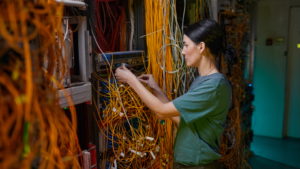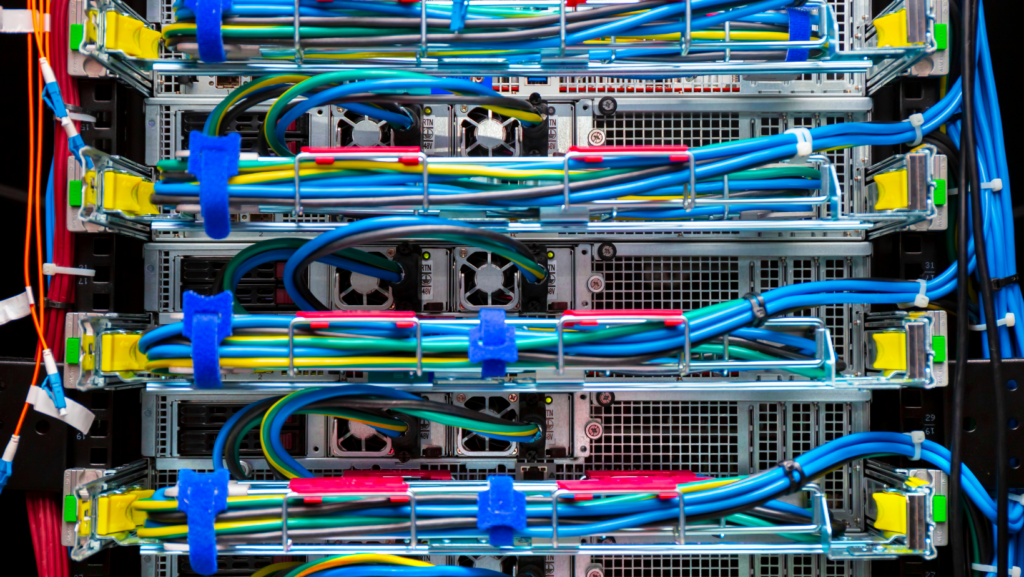In the world of IT infrastructure, server cable management often takes a backseat, yet its importance can’t be overstated. Proper cable management isn’t just about aesthetics; it’s crucial for maintaining system efficiency and reliability. With tangled cables, troubleshooting becomes a nightmare, and airflow can be obstructed, leading to potential overheating.
Efficient cable management enhances performance and reduces the risk of downtime. By organizing cables systematically, data centers can ensure that maintenance tasks are quicker and easier, minimizing disruptions. Moreover, well-managed cables contribute to a safer working environment by reducing trip hazards and preventing damage to the equipment.
Server Cable Management

Server cable management encompasses organizing and securing cables in server racks to improve system efficiency. It reduces clutter, enhancing traceability during maintenance or upgrades. Proper management facilitates airflow, preventing overheating and extending the lifespan of equipment.
Cable Types: Ethernet cables, power cords, fiber optic cables, and patch cables each have distinct roles. Understanding their functions aids in creating a streamlined setup. Ethernet cables connect servers to networks, while power cords provide necessary power. Fiber optic cables handle high-speed data transmission, and patch cables connect network equipment.
Tools and Accessories: Cable ties, cable trays, and labeling systems organize and secure cables. Cable ties bundle cables neatly, cable trays provide structured paths, and labeling systems help identify cables quickly.
Configurations: Horizontal and vertical cable management are vital for arranging cables efficiently. Horizontal management aligns cables along the plane of a server rack, while vertical management routes them vertically. Employing both reduces tangling and improves access.
Security Implications: Organized cables minimize accidental disconnections, reducing downtime risks. Tangled cables can lead to accidental unplugging, causing data loss or service interruptions.
Importance of Proper Cable Management

Enhancing System Performance
Efficient cable management streamlines data flow in server systems. Organized cables reduce electromagnetic interference and improve signal integrity. This boosts system performance, ensuring quick, reliable data transmission. When cables are adequately managed, maintenance personnel can quickly identify and rectify connection issues.
Minimizing Risk of Downtime
Improper cable placement often leads to disconnections or damage, causing unexpected downtime. With proper management practices, cables are secured and labeled, reducing these risks. This setup enables staff to easily trace and address faults swiftly, minimizing service disruptions. Proper management also mitigates overheating risks by allowing for better airflow.
Essential Tools and Accessories
Cable Ties and Velcro Straps
Cable ties and Velcro straps provide effective solutions for bundling cables. Cable ties offer a permanent and sturdy option for securing cables in fixed positions. Velcro straps provide flexibility, allowing easy adjustments during maintenance or upgrades. Widely used materials include nylon for ties and hook-and-loop fabric for straps.
Cable Organizers and Trays
Cable organizers and trays effectively manage cable pathways. Cable organizers maintain neatness and prevent tangling by threading cables through designated channels. Trays offer a structured route for cables, aiding in systematic distribution and reducing clutter in server racks. Metal and plastic options cater to different load requirements and environments.
Best Practices for Server Cable Management

Effective cable management begins with a well-thought-out plan and layout. Mapping the server room’s cable routes ensures that future upgrades and maintenance can be executed seamlessly. IT teams should design layouts that facilitate easy access to devices for troubleshooting and upgrades. Incorporating color-coded cables aids in quick identification of connections, enhancing the speed and accuracy of interventions. Planning also involves foreseeing future growth to avoid overcrowded or tangled cables as systems expand.
Maintenance is crucial for sustainable server cable management. Regular audits of cable setups prevent issues from becoming critical by identifying disorganized or faulty cables early. These inspections should include checking labels, adjusting bundling, and ensuring cables are as per the layout design. Periodic training for personnel also ensures they adhere to best practices, maintaining the integrity and order of the cable infrastructure.



